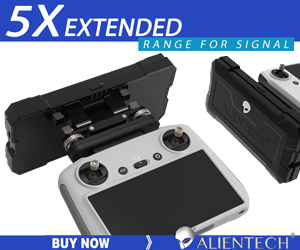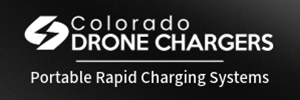Once it hits salt water it's game over, no matter how dry you get it. The salt water causes corrosive short circuiting on the board.
That's not always the case. Last Saturday my MP fell into 3 feet of salt water out at my boat house (due to operator error), it took me over 10 minutes to retrieve it. I immediately removed the battery and started running fresh water from a hose at the boat house over and into my drone. I took my MP up to the house and disassembled it then sprayed it
liberally with a can of CRC QD Electronic Cleaner - the cleaner helped remove the salt and minerals in the sea water and to displace the water. I sprayed the cleaner on all of the circuit boards and into the engine pod nacelles. The objective is to remove as much of the salt and mineral deposits as possible and to displace as much seawater as possible - so don't be stingy with the cleaner!!! You can't make things any worse. Only after I was satisfied that I had cleaned all of the salt and mineral deposits and displaced all of the water that I could did I use my wife's hair dryer to thoroughly dry the components.
I let the bird sit until Monday morning. I carefully examined the circuit boards and other components under bright light using a magnifying glass. The CBs looked clean except for a few spots where I could see small areas of what appeared to be mineral/salt deposits. Out came the CRC QD Electronic Cleaner again, using the point of a needle and the magnifying glass I
Carefully and
Delicately chipped away at these small areas of mineral/salt deposits. I use a soft bristle toothbrush to
delicately brush away the dislodged deposits. I took my time (about an hour) going over the 2 CBs, frame parts and other components. After satisfying myself that all of the components were clean I gave everything one final spray down with the cleaner then
gently patted dry all of the parts - the QD in the cleaners name stands for
quick drying. I left the MP disassembled for a couple of hours to allow the components to thoroughly dry, then reassembled the bird. Once reassembled with the props removed I inserted a battery, powered up the RC the held my breath and powered on the MP.... after a couple of seconds I was greeted by the familiar sounds of my MP coming back to life - it started up like normal! It was after dark Monday evening when I finally got things put back together. I put the props back on gave the bird a thorough pre-flight then took it outside for a quick test flight. I powered the drone up then let it sit with the motors idling while I gathered the courage to move the throttle forward. I climbed to 6 ft and let the drone hover while I evaluated it's performance and system read outs - all reading were nominal. I made several 360s to the left and to the right, flew forward and backwards and made short climbs and descents to test those axis of movement - performance in all axis was normal. I've flown progressively longer and more involved flights
over the last few days and as far as I can tell the bird flies the same now as it did before the "salt water bath" (YMMV).
To recap:
Get your drone out of the salt water as quick as you can (advice courtesy of Captain Obvious)
Remove the battery ASAP (my batt started oozing a greenish liquid just minutes after the drone was recovered)
Rinse the drone with fresh clean water ASAP! Don't give the salt water time to evaporate and leave salt/mineral deposits on CBs, etc.
Don't be stingy with the fresh water, you want to dilute and displace the salt water and the minerals dissolved in the salt water (diluted salt and minerals in water are mortal enemies of electronic components).
Don't be in a hurry to start using the hair dryer just yet, using the dryer at this point evaporates the water leaving a thin film over everything it touches. As soon as you can apply 99.1% isopropyl alcohol (anything less than 99% has some water mixed in - we're trying to get rid of the water remember) using a spray bottle would be ideal. Absent a spray bottle use what you have at hand (q-tips, soft clean cloth, etc.), the electronics cleaner that I used came In a spray can with a thin tube extender and worked really well at spraying down the CBs and getting the cleaner into hard to reach crevices. When you're satisfied that you've removed all of the salt and mineral deposits that you can and have displaced as much water as you can then bring out the hair dryer (use high fan, no heat).
When you're done blow drying the components leave them disassembled to facilitate air drying for 24 hours.
After allowing the components to air dry for 24 hours carefully inspect all of the parts again under bright light and a magnifying glass.
If you find areas of salt/mineral residue (I found a few small areas) use a tiny "pick" (I used the point of a needle) to
gently and
carefully
dislodge the residue then using a soft bristle toothbrush rinse away with the 99.1% isopropyl alcohol (I used CRC QD Electronic Cleaner, couldn't fine the 99.1% isopropyl alcohol). Then allow several hours to dry (alcohol and or quick drying electronics cleaners evaporate quickly) then reassemble your MP.
Be systematic and patient when powering up your MP for this initial test. Do a thorough pre-flight inspection, I suggest leaving the props off. Power up the MP and be alert for smoke or unusual odors (smell of electronics over heating, etc.). Start the motors and allow them to run at idle power long enough for you to evaluate how well (smooth) they run and monitor the health of the various sub systems (battery health, IRUs, accelerometers, camera and gimbal assembly, etc.) then shut the drone off. Take some time to evaluate how well the test run went. If the test run was successful install the props and make a short test flight (I suggest limiting your altitude to 6 ft or so
at first until you are satisfied that all systems are a go for flight).
Finally, I intend to disassembly and inspect my MP every couple of weeks for the next few month to make sure that the components are still free of corrosion causing salt/mineral deposits.











